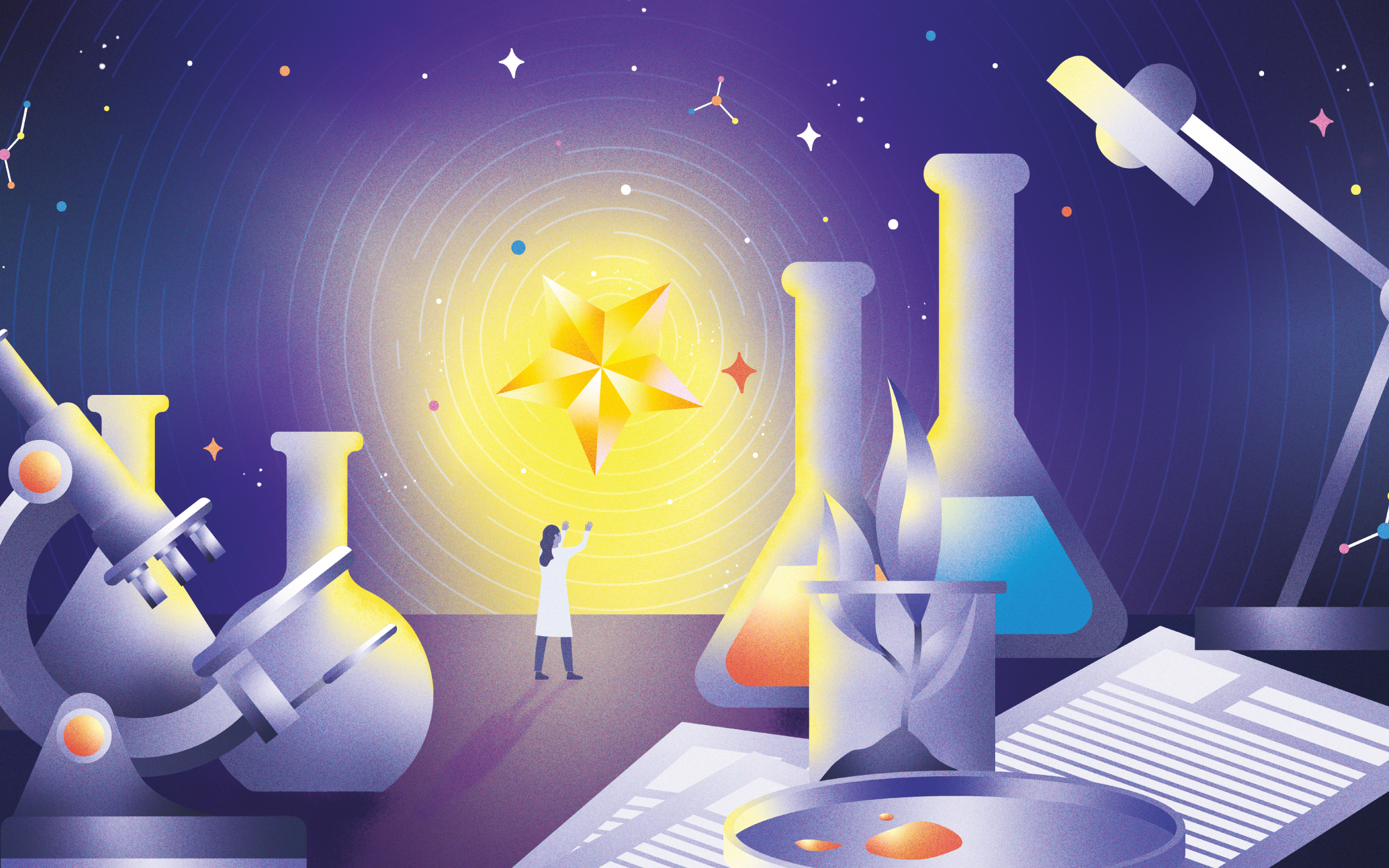Can we detect skin cancers without cutting into the skin? How do we build better batteries for future vehicles? What will the next generation of wireless networks rely on? Can we refine the way we make things to reduce their carbon emissions?
From cancer biology to novel materials, researchers at A*STAR are leading the search for answers to vital questions across a broad range of scientific and technical fields. These questions include critical ones in population health, such as how bioinformatics can tackle future pandemics; as well as foundational ones for future cities, such as how photonics could create safer autonomous vehicles.
To recognise outstanding A*STAR researchers for their contributions, leadership and impact on the local and international scientific community, A*STAR awards the A*STAR Fellowship and Distinguished Fellowships on an annual basis. The fellowships are highly competitive and honour individuals who have demonstrated technical and scientific excellence in their research fields and stepped into leadership roles during their tenure at A*STAR.
This year saw two A*STAR researchers selected as A*STAR Distinguished Fellows, with another 12 selected as A*STAR Fellows. In this issue of A*STAR Research, we speak to the latest awardees about their ongoing work, the questions they aim to answer and their aspirations in scientific leadership.
2024 A*STAR Distinguished Fellows
Institutional leaders of global distinction
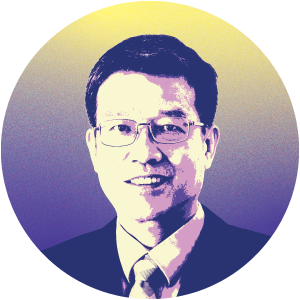
Kui Yao
Senior Principal Scientist III / Senior Group Leader (Piezo Tech),
Institute of Materials Research and Engineering (IMRE)
Medical ultrasound machines, memory storage devices and other products built on ferroelectric materials make up a multi-billion-dollar market. Ferroelectrics are usually thought of as a subgroup of piezoelectrics: materials known for their ability to generate electricity from mechanical stresses like movement and sound. Furthermore, ferroelectrics also possess amazing multifunctional properties, effects and a rich physics that have long drawn Kui Yao’s attention.
Beyond their commercial uses in electronics, semiconductors, medical devices and communications, Yao believes that ferroelectrics have a much greater potential yet to be explored, particularly in the areas of advanced sensors, transducers, memories and intelligent systems. Furthermore, many fascinating ferroelectric-related phenomena remain poorly understood.
At the A*STAR Institute of Materials Research and Engineering (A*STAR IMRE), the Piezo Tech Group led by Yao focuses on two lines of research: the development of ferroelectric materials with superior piezoelectric performance properties; and the production of market-competitive electromechanical sensors and transducers, used in structural or condition monitoring and medical applications. One of the group’s goals is to create environmentally-friendly, lead-free alternatives to current widely-used piezoelectric materials which contain toxic amounts of lead.
Through collaborations with other A*STAR research institutes such as the Institute of Microelectronics (IME) as well as industry partners, Piezo Tech Group strives to provide impactful, competitive and sustainable technical solutions to societal and industry challenges through their novel piezoelectric materials and the advanced microelectronics they enable.
“I’d like to share the recognition from this award with my colleagues, students and collaborators in ferroelectrics and piezoelectrics; it increases the visibility of our research and strengthens our resolve to continue our efforts in these areas.”
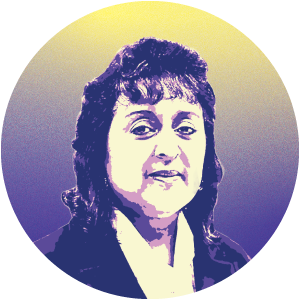
Malini Olivo
Distinguished Principal Scientist / Group Leader (Translational Biophotonics),
A*STAR Skin Research Labs (A*SRL)
It’s said that getting some sunlight is key for health and happiness. Riding on this idea, scientists are turning the latest advances in the science of light to the study and treatment of human health. This marriage of medicine and physics, known as photomedicine, spoke to Malini Olivo, a pioneer of the field since her initial PhD work in 1985.
Today, Olivo leads the Translational Biophotonics Group at the A*STAR Skin Research Labs (A*STAR SRL), where she continues to examine how laser and optics technologies can be harnessed for cutting-edge medical solutions. One ongoing project at Olivo’s lab is an optoacoustic tool that unites light’s ability to create high-resolution surface images with sound’s ability to image through opaque layers, creating deep and detailed 3D body scans without invasive procedures or X-rays.
Olivo and colleagues are developing techniques using their tool to determine the margins of breast and skin tumours during surgeries, which would shorten postsurgical wait times for a confirmed cancer diagnosis. The team is also using this technology to diagnose skin diseases like eczema and psoriasis in adults and children, as well as to noninvasively monitor responses to expensive drug treatments.
The technologies coming out of Olivo’s lab are currently undergoing first-in-man clinical studies at Singapore’s National University Hospital (NUH) and National Skin Centre (NSC). Olivo hopes that these tools will revolutionise how optoacoustics are used to detect and manage cancers and inflammatory skin conditions.
“My long-term goal is to do more groundbreaking research in biophotonics methods and combine them with artificial intelligence (AI) analytics for life-changing medtech solutions that will be clinically adopted for patients in Singapore and beyond.”
2024 A*STAR Fellows
Team leaders of national scientific excellence
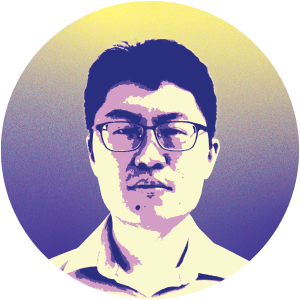
Huajun Liu
Principal Scientist / Group Leader (The Oxide Lab),
Institute of Materials Research and Engineering (IMRE)
High-speed wireless networks are gaining recognition as the bedrock of a smart nation. However, the devices currently supporting these networks might struggle to provide the data transfer speeds needed for future technologies, due to the physical limits of silicon and other semiconductive materials widely used today.
To Huajun Liu, functional oxides represent a huge family of future materials for next-generation wireless technologies. These transition metal oxides, especially those with a crystal structure known as perovskites hold fascinating properties not found in silicon or other conventional counterparts, such as ferroelectricity, piezoelectricity and superconductivity.
With support from the National Research Foundation’s Competitive Research Programme, Liu and colleagues are using perovskite oxides to create wideband, tuneable acoustic filters for wireless communications. These energy-efficient filters integrate high-performance thin films—previously developed by the team—onto silicon wafers for large-scale manufacturing, and can be used for ultrahigh-speed 5G and 6G wireless communications, allowing for data-intensive applications like virtual reality and autonomous driving.
Moving forward, Liu’s team aims to work with industry leaders to bring their thin films into a wider range of commercial products, improving productivity and social connections. Liu hopes that the team’s materials and technologies will help build the hardware foundation for Singapore’s digital economy and smart nation aspirations by removing the limits of wireless connectivity.
“The A*STAR fellowship will support us as we build collaborations with key global players in microelectronics product R&D, especially in the adoption of new materials for wireless communication chips.”

Jingmei Li
Principal Scientist II / Group Leader (Women’s Health and Genetics),
Genome Institute of Singapore (GIS)
Over 2,000 new breast cancer cases are diagnosed every year in Singapore, and the upward trend shows no sign of stopping. The disease’s public health burden and its significant heritable components are what spur Jingmei Li on to study its genetics, supported by her aspiration to do science for women.
With clinical collaborators, Li is running the BREast Screening Tailored for HEr (BREATHE) study: a risk-based breast cancer screening study that estimates disease risk at an individual level. Similar to how persons at high risk for heart diseases are identified from risk factors such as blood glucose, blood pressure and blood cholesterol, BREATHE’s goal is to pinpoint risk factors, both genetic and environmental, that can help stratify women into different breast cancer risk categories.
Beyond the science, Li—for whom “science is not complete until communicated”—aims to mentor those with a passion for public health research, inspiring them to not only do good science, but also carry its outcomes into the world beyond the laboratory.
“Our studies depend on the generosity of our participants, and we owe it to them to share our findings in ways that can make a real difference. The A*STAR Fellowship will help us train and grow our team, giving us the tools to not only do the research but to share it in ways that will improve lives.”

Jonathan Göke
Principal Investigator / Group Leader (Computational Transcriptomics),
Genome Institute of Singapore (GIS)
For Jonathan Göke, the compactness of genes is endlessly fascinating: a single genome can encode all the information to build a complete organism. Göke is particularly intrigued by what RNA can tell us about the genome. As the central messenger molecule generated by active genes, RNA provides exciting insights on genome behaviour, the unique features of cells, the effects of human disease, and other fundamental aspects of biology.
A key question Göke aims to answer is how two RNAs with the same sequence can be interpreted very differently by our cells. While chemical modifications are known to be involved, the have been difficult to identify.
To tackle this challenge, Göke’s lab has developed computational methods that can pick out such modifications from direct RNA sequencing data. These methods allow scientists and clinicians to study where the modifications occur, how they impact RNA, and how they might be changed in human disease. By applying their methods to samples from human patients, Göke hopes to discover new biomarkers to aid disease diagnoses.
“My goal is to develop computational methods that make a difference to our understanding of RNA. The A*STAR Fellowship will help us build new connections and collaborations to apply these methods in a way that makes a real-world impact.”

Jonathan Sze Choong Low
Assistant Chief Executive,
Advanced Remanufacturing & Technology Centre (ARTC); Director, Centre for Energy and Emissions Modelling (CE2M)
A car’s carbon footprint story begins at its creation. From the extracted oil and metals used to the manufacturing process itself, each vehicle piles up carbon emissions before it travels a single mile. The car may reach its end in a landfill; however, parts of it might also be recoverable, creating raw materials for new cars.
Clearer views of the environmental impacts of such life cycles can help stakeholders optimise them for sustainability. At SIMTech, Jonathan Low tackled challenging problems in the field of life cycle engineering (LCE) by developing tools to model and estimate those impacts; not just at the level of a single product, but up to factories, supply chains and even regional economies.
Low is currently the Assistant Chief Executive at ARTC, and concurrently leads the Centre for Energy and Emissions Modelling (CE2M), a national research programme hosted by A*STAR. CE2M aims to build and integrate different simulation models that will enable Singapore’s public sector agencies to coordinate and plan the most viable pathways to net-zero national emissions by 2050.
“My long-term goal is to make LCE tools more intuitive and accessible, allowing decision makers to take a more data-driven approach to sustainability management. The A*STAR Fellowship’s support will enable me to establish a critical mass of research capabilities in this area for A*STAR, and help Singapore reach our net-zero goal.”
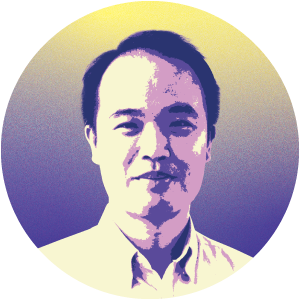
Qingfeng Chen
Senior Principal Investigator,
Institute of Molecular and Cell Biology (IMCB)
Humanity’s war against disease faces several hurdles due to the complexities of many major diseases and the lack of suitable tools to study them. Cancers, for example, have intricate relationships with our immune system that researchers struggle to replicate in animal models such as mice.
Driven by the gaps in our understanding of disease, Qingfeng Chen’s research journey has centred on developing ‘humanised’ mouse models. Engineered to express human genes, tissues or cells, these models can provide a more relevant biological context for studies of human-specific processes like immunity, infection and cancer.
Chen’s team is involved in multiple collaborations, including several with hospitals, to use their humanised mice in studies of how drugs affect tumours and immune systems in patients with various forms of cancer. By monitoring a drug’s dynamics on a preclinical model as close to human as possible, researchers can better understand how best to administer the drug in human trials, improving the speed and efficiency of drug discovery and development.
Looking ahead, Chen continues to refine his models to create a more accurate and comprehensive representation of human physiology. He is particularly keen to understand how our immune system reacts to immunotherapy and what those reactions reveal about the mechanisms of disease.
“We hope to use these advanced humanised models to tackle key challenges in personalised medicine, drug development and regenerative medicine, which would significantly advance biomedical research and speed up clinical translation of effective therapies to patients.”
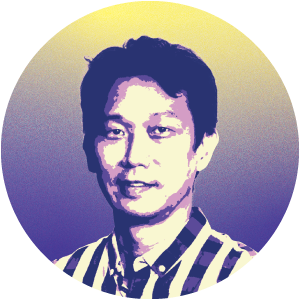
Raphael Tze Chuen Lee
Research Manager (Biofunctional Discovery),
Bioinformatics Institute (BII)
As a university student, Raphael Lee pondered how scientific discoveries in biology and medicine could be further enabled by huge databases of easily retrievable data, especially if paired with the right tools to analyse, model and visualise it all.
Lee believes that computational biology can help us better understand how every molecule or cell in the human body works together, shedding light on some of life’s deepest mysteries. This conviction motivates his work in viral infectious disease surveillance at BII, where his team has built a suite of bioinformatics tools for priority pathogens such as SARS-CoV-2, influenza, dengue and Zika.
The team’s tools harmonise data on disease spread, genetics, 3D structures and the downstream effects of mutations, then presents useful information to users at the click of a button. They also help researchers check and annotate genetic sequences, predict how viruses accumulate mutations over time, and gauge how likely viral variants are to spread.
A major milestone for Lee’s team was their development of the CoronaVirus Surveillance Surver (CoVsurver), which helped scientists in South Africa analyse the first few sequences obtained from the SARS-CoV-2 Omicron variant. Today, their tools are in use by the global infectious disease research community, as well as by Singapore’s public health authorities for disease surveillance and monitoring.
“By building on our research and analytics capabilities, and improving our current pipelines, we see ourselves playing a bigger role in international efforts to tackle future epidemics and pandemics.”
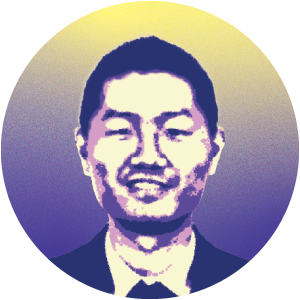
Wei Wang
Deputy Executive Director,
Singapore Institute of Manufacturing Technology (SIMTech) and Advanced Remanufacturing and Technology Centre (ARTC)
In today’s factories, advanced image analytics help track manufacturing quality defects, while industrial robots on factory floors do the rote work of handling materials and assembling products. Whether it’s cars, planes, electronics or medicines, advanced manufacturing technologies are changing the way things are made.
For Wei Wang, his most memorable contribution to the deployment of such technologies was the launch of the Smart Manufacturing Joint Lab in 2017. Wang was the founding programme manager for the tripartite five-year collaboration between A*STAR; UK aeroengine maker Rolls-Royce; and local maintenance, repair and overhaul company Singapore Aero Engine Services Private Limited (SAESL). Backed by a S$60 million investment, the Joint Lab would develop and deploy advanced manufacturing technologies to improve productivity, cost savings and business competitiveness in the aerospace industry.
Wang is now slated to lead the Sectoral AI Centre of Excellence for Manufacturing (AIMfg), a pilot initiative jointly developed by A*STAR and Singapore’s Ministry of Trade and Industry. AIMfg aims to accelerate AI adoption in Singapore’s manufacturing sector, focusing on technology translation, ecosystem building and workforce augmentation. Wang sees a potential for AI to assist factory technicians in monitoring plant systems and processing technical data, allowing them to focus on more complex tasks.
“Advanced manufacturing is a very complex sector; the key challenge when it comes to translating technologies is always the bridging between R&D outcomes with industry application and demand.”
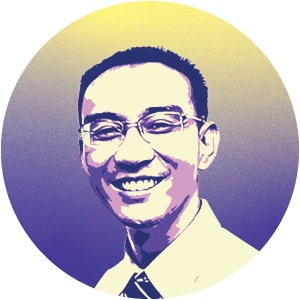
Xianshu Luo
Principal Scientist,
Institute of Microelectronics (IME)
Fibre optics have evolved to a point where we can download our favourite movies in mere seconds. Today, these technologies harness light to carry vast amounts of data over long distances with minimal loss, creating swift and reliable communication networks.
This growing role of photonics—the physical science of light waves—in the data revolution is what inspires Xianshu Luo to push the field’s boundaries. Luo’s focus is on silicon photonics: technologies that combine silicon-based microchips with optical elements to power groundbreaking innovations.
At the National Semiconductor Translation and Innovation Centre (NSTIC), an A*STAR-led initiative, Luo and colleagues are developing a new generation of photonic technologies that integrate best-in-class photonic materials onto a silicon platform. Harnessing the unique properties of materials such as lithium niobate and III-V semiconductors, Luo sees these technologies paving the way to low-power high-speed optical communications; laser-based sensors for self-driving vehicles and robots; photon-based quantum computing; as well as advanced radiofrequency (RF) devices.
To fulfil the transformative potential of silicon photonics, Luo is striving to bridge the gap between fundamental research and real-world applications to driving the adoption of photonic technologies in a variety of industries.
“I want to see photonic integration become as ubiquitous and impactful as traditional semiconductors, enabling faster, smarter and more sustainable future technologies.”
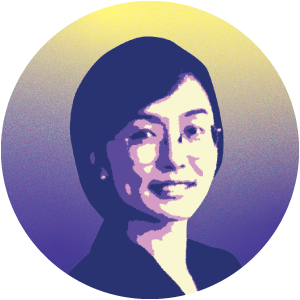
Yao Zhu
Head of Department (Micro Electro Multiphysical Systems),
Institute of Microelectronics (IME)
Embedded in the tight spaces of battery-powered devices, micro-electromechanical systems (MEMS) can be narrower than a human hair. These lightweight, energy-efficient parts are fabricated en masse semiconductor-like batch processes that make thousands of them from a single silicon wafer.
Yao Zhu is tackling the ‘Lab-to-Fab’ issue: a major challenge for fabless MEMS companies, which design devices for partnering foundries (or ‘fabs’) to fabricate. Differences in equipment and processes, can cause prototypes and manufactured devices to vary, hindering a design’s transition from development to production.
Zhu’s team partnered with semiconductor manufacturer STMicroelectronics and equipment manufacturer Ulvac to establish the world’s first Lab-in-Fab facility, in Singapore. With R&D by IME, IMRE, NUS and STMicroelectronics performed in the same fab with the same equipment as manufacturers, this unique setup allows MEMS developers to commercialise their devices more quickly and with at reduced risk.
Through Lab-in-Fab, Zhu’s team offers support ranging from low-cost multi-project wafers to dedicated device proof-of-concept and prototyping. To date, it has aided research projects for local and international universities and institutions; device validation and prototyping for fabless companies, especially startups; and device design and fabrication for major multinational corporations new to the MEMS.
“I’d like to establish A*STAR as the preferred global partner for industry and research groups who want to harness MEMS technology. I aim to see our work adopted in products that improve people’s lives and grow Singapore’s economy.

Yu Fu
Senior Principal Investigator (Neuronal Regulation of Appetite and Feeding),
Institute of Molecular and Cell Biology (IMCB)
A grazing deer, still hungry, scents a predator on the wind. What shapes the deer’s decision to keep eating or flee? Such questions intrigue Yu Fu, who studies how the brain processes different kinds of information to influence our feeding behaviours.
At IMCB, Fu’s team has established novel multi-modal imaging capabilities to find critical neural circuits involved in obesity. Using these tools to investigate brain-wide neural connectivity changes in lean versus obese mice, the team found several novel neural mechanisms behind abnormal eating behaviours, such as compulsive eating and conditioned overeating. These findings have led to similar discoveries in human brain images, suggesting that such neural connections could be targeted to prevent or treat obesity.
Building on this work, Fu aims to understand how the peripheral nervous system shapes the functional resilience of the brain and organs under stress. Fu hopes such research will help improve health outcomes in Singapore, where stress affects a significant portion of the population.
“I believe that a better understanding of appetite regulation can help the fight against obesity and metabolic diseases. The A*STAR Fellowship is a recognition of my past achievements in this area and an encouragement to explore new frontiers of biomedical research.”
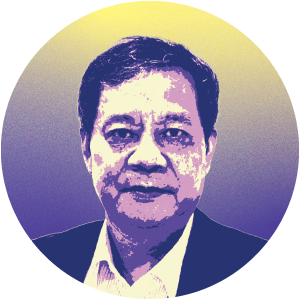
Zhaolin Liu
Senior Principal Scientist II,
Institute of Materials Research and Engineering (IMRE)
Powering smartphones, vehicles and energy grids alike, batteries are everywhere today, having come a long way in their ability to efficiently convert and store electricity. They’re a key part of worldwide research efforts in sustainable energy technologies that aim to hasten our society’s economic transition from fossil fuels to cleaner sources.
Zhaolin Liu is aiding these efforts by investigating novel materials for Li-ion and metal-air batteries, with a focus on manipulating these materials to improve their energy density, stability and safety. A particular scientific and technological challenge of interest to Liu is making metal-air batteries electrically rechargeable.
One major bottleneck in battery performance tends to be a voltage gap between its charge and discharge potentials, due to sluggish reactions at its air electrode. Liu’s group specialises in developing high-performance, low-cost catalysts which are bifunctional—able to catalyse two different types of reactions—to narrow down voltage gaps and improve energy efficiency.
As EVs and battery solutions are more widely deployed across Singapore’s economy, Liu and colleagues are also working on tools and techniques to remanufacture and expand the capacities of retired batteries, as well as to recycle and recover the precious materials they contain to improve their overall sustainability.
“I aim to build niche technologies that eventually enable the emergence of novel battery systems and new applications in battery repurposing and recycling.”

Zhi Wei Seh
Senior Principal Scientist,
Institute of Materials Research and Engineering (IMRE)
From rising sea levels to devastating hurricanes, humanity’s impact on the world is increasingly reshaping its climate. These extreme events are among what drives Zhi Wei Seh's work on sustainable energy solutions for electric vehicles (EVs) and large-scale grid storage.
Seh's group is focused on multivalent-ion batteries: promising alternatives to the lithium-ion (Li-ion) devices that power EVs and myriad devices. Multivalent metals such as magnesium, zinc and aluminium offer many advantages over lithium as battery components, given they carry 2 to 3 times more charge per unit volume, are much more abundant in the Earth’s crust, more uniformly distributed around the world and less chemically reactive.
However, multivalent-ion battery chemistries radically differ from Li-ion ones, which means they need entirely different materials for their anodes, cathodes and electrolytes. Seh and colleagues aim to design novel materials that fill those gaps and enable the creation of safer, cheaper and more energy-dense successors to Li-ion batteries.
While Seh is currently focused on fundamental studies on these new battery systems and their reaction mechanisms, he is also approaching industry partners to bring these technologies to market.
“I hope to see our batteries in better future EVs that run on clean energy. I’d also like to lead the field of energy storage and conversion forward, and to translate our research outcomes into commercial solutions for the benefit of mankind.”

